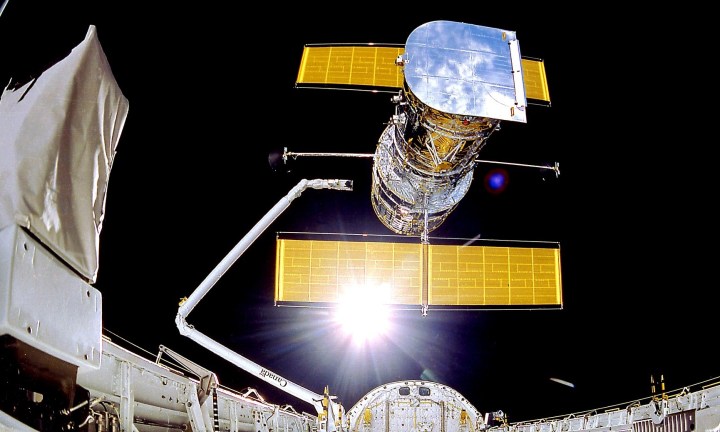
The beloved Hubble Space Telescope is experiencing a computer problem and is currently not collecting scientific data. NASA engineers are working on fixing the issue, but it’s proving difficult to get the 30-year-old telescope operating as it should.
The problem began on Sunday, June 13, when the Hubble payload computer stopped working. This computer, built in the 1980s, controls all of the telescope’s science instruments, so it’s an essential part of the Hubble system. When the computer stopped responding, all of the science instruments were automatically put into safe mode.
The first thing the NASA Hubble team did to try and fix the problem was just what we all do when a computer stops working — turn it off and turn it on again. They restarted the computer on Monday, June 14, but that didn’t fix the issue. They thought that the problem might be a degrading memory module, so they got ready to switch to a backup module instead. But that didn’t work either, as the command to switch to the backup wasn’t accepted.
The Hubble team continued to work on running diagnostics and bringing the memory module online through last week. They found that the issue might actually lie in a different piece of hardware, the Standard Interface (STINT), or with the Central Processing Module (CPM), with the issue with the memory module being a symptom of this underlying problem.
There are two payload computers in the telescope, the primary one and a backup, which both use the same type of hardware. So the team tried turning on the backup computer this week, but it had the same problem as the primary computer. Even though it didn’t work, the fact the same error happened with both computers gives the team more information on what might be wrong.
“Since it is highly unlikely that all individual hardware elements have a problem, the team is now looking at other hardware as the possible culprit, including the Command Unit/Science Data Formatter (CU/SDF), another module on the SI C&DH,” NASA wrote. “The CU formats and sends commands and data to specific destinations, including the science instruments. The SDF formats the science data from the science instruments for transmission to the ground. The team is also looking at the power regulator to see if possibly the voltages being supplied to hardware are not what they should be. A power regulator ensures a steady constant voltage supply. If the voltage is out of limits, it could cause the problems observed.”
The team intends to continue its testing over the next week. Fingers crossed for this very special piece of scientific equipment to be fixed soon so it can get back to capturing stunning images of space.



